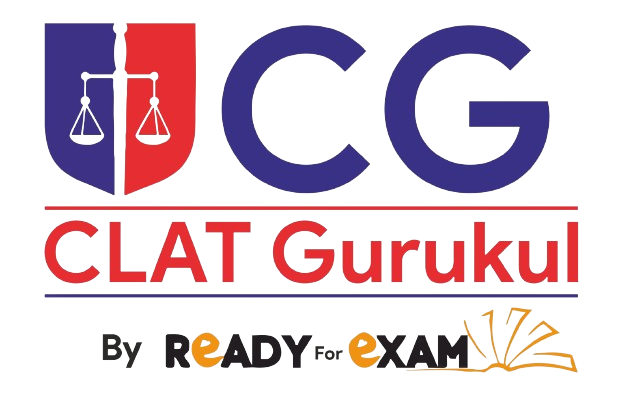Syllabus and Pattern of CLAT
Syllabus and Pattern of CLAT
Common Law Admission test or commonly known as CLAT is a law entrance examination conducted by 14 National Law Universities on a rotation basis.
The syllabus of CLAT which consists majorly of 5 sections like Quantitative aptitude (Maths ), Verbal ability (English ), Logical Reasoning, Current affairs and legal aptitude, is designed in such a way that students of all streams (Science, Humanities, Commerce ) can take CLAT. The only thing required is zeal and passion to make a career in law.

CLAT 2021 exam pattern
Subject/Section
Expected Number of questions (CLAT 2020)
English
30
Legal Reasoning
40
GK & Current Affairs
35
Logical Reasoning
30 (80% Verbal / 20% Non-Verbal Reasoning)
Quantitative Techniques
15 (DI based Questions)
Total Marks
150
Negative Marks
0.25 marks for each wrong answer.
Total Time
120 minutes
If you look at the official syllabus issued by CLAT Consortium it expressly states that the UG-CLAT 2021 would focus on evaluating the comprehension and reasoning skills and abilities of candidates. Further it adds that, it is designed to be a test of aptitude and skills that are necessary for a legal education rather than prior knowledge, though prior knowledge occasionally may be useful to respond to questions in the Current Affairs section. However if you analyze the Question Paper of CLAT 2020, you will not find that to be the case, prior knowledge was not only occasionally helpful but it was generally very helpful.
Let’s dive into a detail assessment of each sections in CLAT UG Entrance Exam
English Language
In this section of the UG-CLAT 2021, you will be provided passages of about 450 words each. These passages will be derived from contemporary or historically significant fiction and non-fiction writing, and would be of a standard that a 12th standard student may be able to read in about 5-7 minutes.
Each passage will be followed by a series of questions that will require you to demonstrate your comprehension and language skills, including your abilities to:
- Read and comprehend the main point discussed in the passage, as well as any arguments and viewpoints discussed or set out in the passage;
- Draw inferences and conclusions based on the passage;
- Summarise the passage;
- Compare and contrast the different arguments or viewpoints set out in the passage; and
- Understand the meaning of various words and phrases used in the passage.
- There were some question related to the correct use of preposition.
- The topics are not limited on only legal issues, so reading a variety of things is imperative. Novels, Fictional Stories, Non-Fiction, Movies, etc. can also help, as the student having prior knowledge of such issues will find no difficulties in understanding of the passage and answering the questions therein.
- Our Classes are primarily designed to take these things into account, and they are based in practicing questions of the same pattern in the class, and working on each student’s speed and accuracy, in order to improve their performance with time.
Current Affairs Including General Knowledge
In this section, you will be provided passages of up to 450 words each. The passages will be derived from news, journalistic sources and other non-fiction writing. The questions may include an examination of legal information or knowledge discussed in or related to the passage, but would not require any additional knowledge of the law beyond the passage.
Each passage will be followed by a series of questions that will require you to demonstrate your awareness of various aspects of current affairs and general knowledge, including:
- Contemporary events of significance from India and the world;
- Contemporary events of significance from India and the world;
- International affairs; and
- Historical events of continuing significance.
- But to add to this list there are more sectors that one should be informed about, e.g. International Legal Affairs, Domestic and International Polity
- Also it is imperative to read about the history of any important contemporary issues.
- It is required to go through any issue in a much detailed manner. Our Daily Assignments, and Weekly, and Monthly Compendium will become your most favorite companion. Our News Pointers Daily are absolute best in this game.
Legal Reasoning
In this section, you will be expected to read passages of around 450 words each. The passages may relate to fact situations or scenarios involving legal matters, public policy questions or moral philosophical enquiries. You will not require any prior knowledge of law. You will benefit from a general awareness of contemporary legal and moral issues to better apply general principles or propositions to the given fact scenarios.
Each passage would be followed by a series of questions that will require you to:
- Identify and infer the rules and principles set out in the passage;
- Apply such rules and principles to various fact situations; and
- Understand how changes to the rules or principles may alter their application to various fact situations.
- We design our classes in such a manner that student finds legal reasoning a piece of cake in the larger scheme of things. Main Legal topics Like The Constitution Of India, Law of Contracts, Law of Torts, Criminal Law, and Other Legal Developments like CAA, 2019, Sabrimala Issue, State Emergency, are discussed in full, with regular Practice Questions based on latest CLAGT Pattern, that is passage based.
Logical Reasoning
The Logical Reasoning section of the UG-CLAT 2021 will include a series of short passages of about 300 words each. Each passage will be followed by one or more questions that will require you to:
- Recognize an argument, its premises and conclusions;
- Read and identify the arguments set out in the passage;
- Critically analyse patterns of reasoning, and assess how conclusions may depend on particular premises or evidence;
- Infer what follows from the passage and apply these inferences to new situations;
- Draw relationships and analogies, identify contradictions and equivalence, and assess the effectiveness of arguments.
- Just to keep it brief, you need a copious amount of practice to get through this section. We have a record of practicing about 50 to 60 questions daily in our Reasoning Classes.
- This is presumably the toughest section in CLAT, and we promise to make it easiest by providing students with most relevant and quality questions.
Quantitative Techniques
The Quantitative Techniques section of the UG-CLAT 2021 will include short sets of facts or propositions, graphs, or other textual, pictorial or diagrammatic representations of numerical information, followed by a series of questions. You will be required to derive information from such passages, graphs, or other representations, and apply mathematical operations on such information.
The questions will require you to:
- Derive, infer, and manipulate numerical information set out in such passages, graphs, or other representations; and
- Apply various 10th standard mathematical operations on such information, including from areas such as ratios and proportions, basic algebra, mensuration and statistical estimation.
- Most Data Interpretation will be there, and hence it is imperative to practice for this section in the same format as well, which is a guarantee with our Practice Materials, and the best approach to deal with such questions will be a regular feature in our regular classes.
How to Prepare for the UG-CLAT 2021
The Consortium plans to publish various preparatory materials for the UG-CLAT 2021, including:
- Guides to the question paper and sample questions;
- Model question papers; and
- Instructional materials and exercises for each of the subjects that the UG-CLAT 2021 comprises.
- Understand the CLAT Exam Pattern and CLAT Syllabus fully
- Practice CLAT Mock Tests and CLAT Sample Papers to get a good grip over the CLAT Exam.
- Break down each section into topics and further into your strengths and weaknesses
- Do engage in regular revision, and practice
- Work on your speed and vocabulary
- Be updated with all the contemporary affairs having any significance.
The Consortium will also provide candidates who have successfully completed their application to the UG-CLAT 2021 access to a learning platform where you may access the preparatory materials described above, as well as your scores on various exercises and model question papers.
In addition, you should develop your capacity to read and understand bodies of text, ensure you stay abreast of news and current affairs by regularly reading quality newspapers and periodicals, and improve your speed of answering questions on quantitative techniques by practicing with materials provided by us or any other good source for Data Interpretation question.
CLAT 2020 Exam Analysis
To get some idea about the CLAT 2021 Exam Analysis, it is imperative to have a look at the CLAT 2020 Exam Analysis. The difficulty level of CLAT 2020 exam was moderate to tough. The exam was as per the guidelines announced by CLAT Consortium. A majority of candidates have attended most of the questions. The general knowledge section of the exam was a little in-depth but the English as legal reasoning section were fairly moderate, and a students with some prior knowledge could easy score well. The cutoff was around 75. And the top colleges closed on 105.
